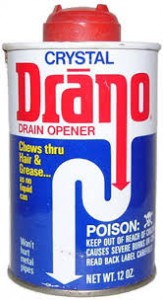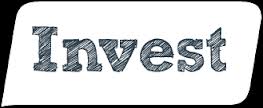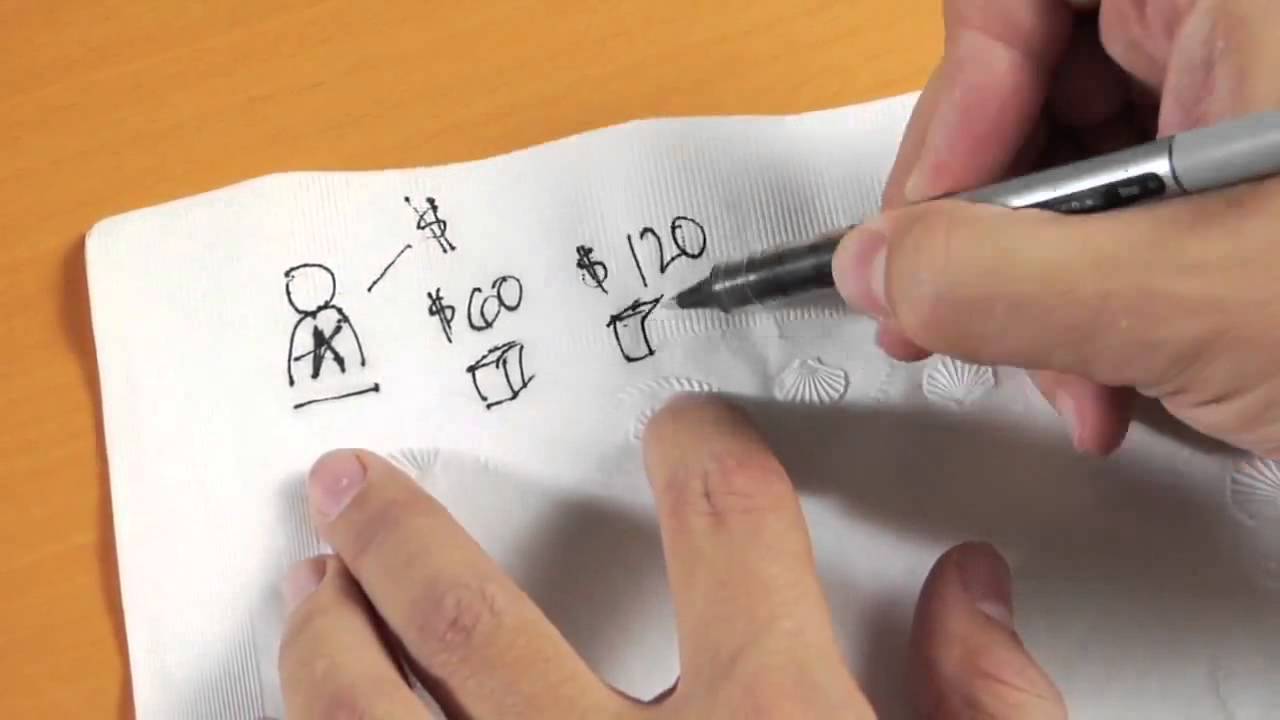
More and more we are seeing donor files that have a great number of lower-dollar donors and quite a few mid-level donors (depending on the size of your organization, between $250-$9,999), but very few major gift donors.
It’s almost like once a donor gets in that middle range, they can’t move up. We’re seeing plenty of them moving down or going away entirely, but the funnel up to major gifts is clogged. Something is not happening, and they can’t get up and out.
I believe it’s time for a mid-level Drano intervention.
I was always fascinated as a kid, watching Drano work. You have this clogged-up sink and you pour these little pellets (that’s what they were back then), go away to watch T.V., and miraculously the clog is gone! Presto, the water is flowing again.
I won’t promise you that a mid-level Drano intervention will be that easy, but something has to be done to unclog the major gift pipeline we see tons of non-profits experiencing. Here are a few warning signs that you have a clogged pipeline to major gifts:
- Every year you see fewer large gifts from donors to your organization that could potentially be qualified a major gift.What was once a reliable source of major donors is no longer helpful, and you are tempted to go out and “fish” for major donors.
- You see retention rates from your $250-$9,999 donor group declining. Something is not right if you are not seeing retention rates in the 75-80% range, and each year they are declining.
- You see average gifts start to drop from this group of donors. This often happens when mid-level donors are only cultivated by direct-response, and the offers are the same year after year.
- You see ROI’s in the 20-60:1 range from your mid-level donors. Yes, that’s right, these ROI’s are way too high. Remember, these donors are giving you between $250-$9,999 a year! Why are you cultivating them just like your $10-$25 donor? Most non-profits spend on average $10-$15 a donor per year to cultivate a donor. If your donor is giving you $250 a year that a 25:1 ROI. If they are giving you $1,000 a year, that’s 100:1 ROI. We believe that if you spend a little more on this group and lower the ROI, you’ll actually bring in more net revenue because you’ll see more response, higher average gifts and higher retention. That’s more net revenue for your great programs!
That last point I make is the reason why you need to start a mid-level program now. If you want a future with a robust major gift program, investing in your mid-level program is mandatory. You cannot treat a mid-level donor like a new or small-dollar donor and expect that they will break through into a major gift program. It’s a very rare occurrence.
It’s not just spending more money on your direct-response creative packaging that will make a difference. It may help, but it’s not going to move the needle that dramatically. Instead, we recommend coming up with a hybrid of a solid direct-response program with a robust major gift program.
We suggest either hiring or outsourcing what we call a mid-level donor officer (MLO) that has a caseload between 500-600 donors. An MLO’s job is to cultivate and steward these donors with phone calls, e-mails, notes and personal touches.
They can handle a caseload of this size because we tier these donors A, B and C level with A’s being the most able to move into a major gift program. This is where the MLO concentrates most of her time. We then create a strategy by tier level with more personalization and time on A’s and B’s.
We are starting to see this strategy work with non-profits. The funnel is starting to become unclogged. Here is what we are looking at to determine the success of a mid-level program:
- Overall revenue is going up with these segments
- Retention increases
- Average gift increases
- More donors are moved out and into major gift programs
- More people raise their hand to inquire about planned giving opportunities.
If your donor file is clogged, I recommend that you act now, implement a mid-level donor plan and watch as you become inundated with potential major gift donors.
Look, with acquisition costs increasing every year and program needs growing, now is the time to look at your own file and figure out ways to stop the bleeding. This will help you keep your best future donors and re-engage them with a more personalized approach than the old strategies you’ve relied on for so many years.
Creating a dynamic and viable mid-level program can be a solution to meeting those increasing program needs. Invest in it today. Run the numbers and find out for yourself how many thousands, perhaps millions of dollars are vanishing because you continue to treat these good donors like they give $10 to you every year.
These donors are invested in you. Now, invest in them.
Jeff







Jeff, I’m a huge supporter of focused efforts with our middle. With that, I’m curious about the size of the portfolio you suggest. Do you know of any organization that’s currently doing this w/ that size portfolio? For personal (or even semi-custom) touches it appears that it would require a well defined program in a mature organization to allow very limited MLO time spent on internal meetings, prospect management / segmentation, strategy creation, material development, management of any team members, or ‘other’ *vacation, continuing ed, sick time, etc*. I love the idea, and would appreciate your thoughts on some ideas on how to make it work. Can you shed more light on it?
The mid-level associate has developed and cultivated the relationship with the donor building trust. How do you transition a mid-level donor to a MGO donor to begin a new relationship and cultivation process? I have found that donors get “accustomed” to one person and oftentimes want to continue communicating with that person. Thank you.
Jeff,
You say that you, ” tier these donors A, B and C level with A’s being the most able to move into a major gift program. This is where the MLO concentrates most of her time. We then create a strategy by tier level with more personalization and time on A’s and B’s.” I recognize that the strategy for each group of donors and each nonprofit is different but perhaps you could share some of the basic thoughts and considerations that go into developing these strategies. Thanks! Steve H.
This is an interesting post. Many good comments. Just thought I’d mention that as a digital marketer.